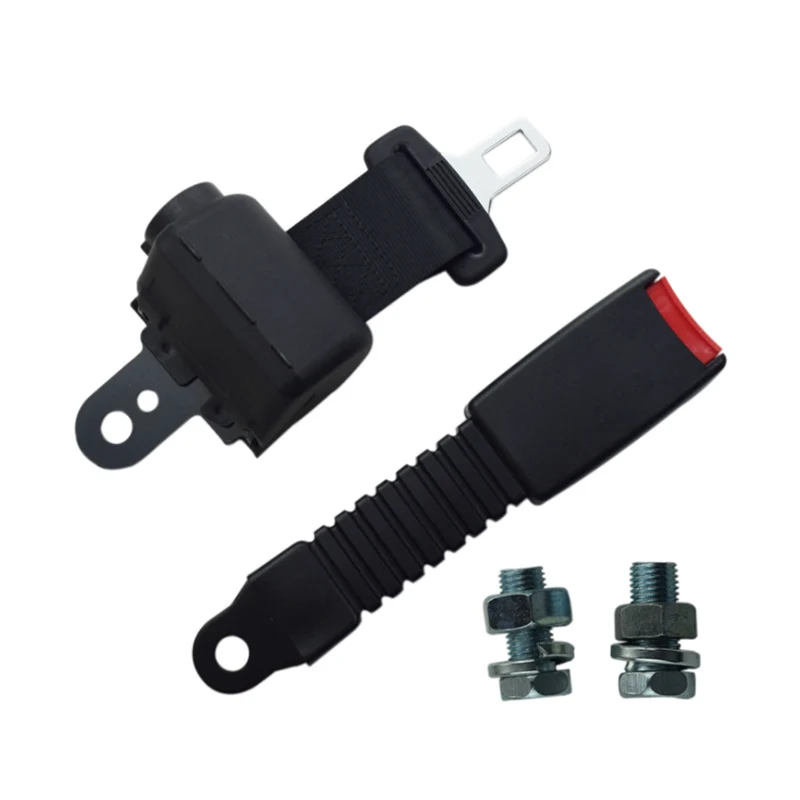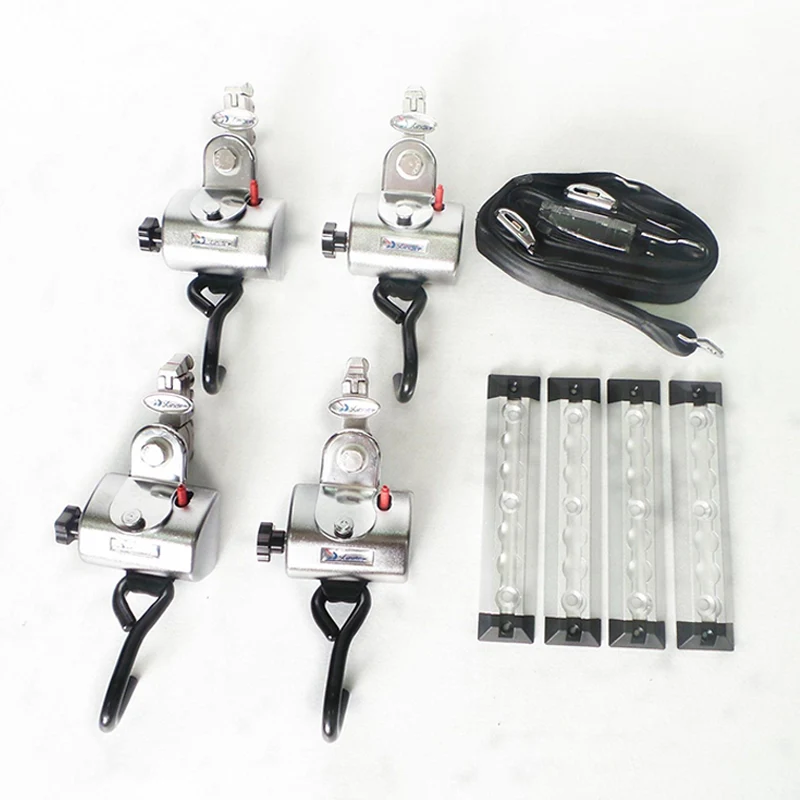Why Are Seat Belts the Non-Negotiable Starting Point for Adult and Child Passenger Safety
2025-09-30
I've spent twenty years reviewing content on automotive safety. In that time, I've seen technologies come and go, but one fundamental truth remains unshaken. The single most effective piece of safety equipment in any vehicle is the seat belt. It's not the flashiest, nor the most high-tech, but it is the cornerstone upon which all other safety systems are built. Yet, I still hear the same questions from parents, new drivers, and seasoned commuters. Why is this simple strap so vital? Let's talk about what I've learned about the profound importance of Automotive Seat Belts for every single person in the car.
What Exactly Happens in a Crash That Makes a Seat Belt Crucial
This is the question we need to start with. It’s not about the car stopping; it’s about you stopping. Newton's law of motion is unforgiving: an object in motion stays in motion. If your car is traveling at 50 miles per hour, so are you. If the car hits a solid object and comes to an abrupt halt, your body will continue flying forward at 50 mph until something stops it. That "something" could be the steering wheel, the dashboard, or the windshield.
A seat belt's primary job is to prevent this catastrophic second collision. It's designed to manage the immense forces of a crash by distributing them across the strongest parts of your body—the pelvis and the rib cage. The modern three-point Automotive Seat Belts system is a masterpiece of engineering, a carefully calibrated device that works in a split second to save your life.
How Do Modern Automotive Seat Belts Protect You Beyond Just Holding You in Place
People often think of a seat belt as a simple strap, but that's a vast oversimplification. Today's belts are intelligent restraint systems. Let me break down the key components that make them so effective, especially those we integrate into our designs at Chuanghecheng Metal.
-
The Webbing: This isn't ordinary fabric. It's a high-tensile material designed to withstand extreme force without tearing. In our Chuanghecheng Metal components, we ensure the attachment points are machined to perfection to guarantee the webbing's integrity under stress.
-
The Retractor: This is the heart of the system. It's what allows the belt to extend and retract smoothly during normal use. But in a crash, it locks up instantly.
-
The Pretensioner: In a severe impact, this pyrotechnic or mechanical device fires, pulling the seat belt webbing back several inches. This critical action removes slack and ensures you are firmly positioned in your seat before the main force of the crash hits you. It works in concert with your airbags.
-
The Load Limiter: A seat belt that holds you too tightly could cause serious internal injury. A load limiter is a clever feature that allows the belt to spool out slightly in a controlled manner once a certain force level is exceeded. This "paying out" action gently cushions the occupant, reducing the risk of chest injuries.
The synergy between these components is what creates a truly protective system. It’s a balance of holding you securely and managing the deceleration energy. This is the kind of sophisticated engineering we are passionate about at Chuanghecheng Metal, where we supply the high-strength, precision metal parts that make these mechanisms reliable.
What Are the Key Technical Parameters That Define a Reliable Seat Belt System
When we evaluate Automotive Seat Belts at a manufacturing level, we look at specific, measurable parameters. These aren't just numbers on a sheet; they are promises of performance. Here is a list of critical factors we test for every single batch:
-
Tensile Strength of Webbing: The minimum breaking strength, often exceeding 25,000 Newtons.
-
Retractor Locking Sensitivity: The precise G-force or vehicle tilt angle that triggers the locking mechanism.
-
Pretensioner Activation Time: Measured in milliseconds, it must synchronize perfectly with crash sensors.
-
Load Limiter Force Threshold: The specific force level at which the belt begins to pay out.
-
Durability Cycle Testing: The number of extension/retraction cycles (often 50,000+) the belt must endure without failure.
-
Corrosion Resistance of Metal Components: Tested through salt spray chambers to ensure longevity in all climates.
To give you a clearer picture, here is a table summarizing the performance standards for a typical front-seat belt system we help produce:
Table 1: Key Performance Standards for a Front-Seat Automotive Seat Belt
| Parameter | Standard Requirement | Test Method |
|---|---|---|
| Webbing Tensile Strength | > 25,000 N | DIN 75230 |
| Retractor Locking (Sensitivity) | < 0.7 G | FMVSS 209 |
| Endurance Cycles | > 50,000 cycles | SAE J1404 |
| Buckling Strength | > 15,000 N | FMVSS 209 |
How Does Proper Use for Children Differ from Adults
This is perhaps the most common and critical concern I address. An adult seat belt can be dangerous for a child. A child's skeleton is still developing, and the belt's geometry is all wrong for their smaller stature. The lap belt can ride up over their abdomen, and the shoulder belt can cross their neck. In a crash, this can cause severe abdominal or spinal injuries.
The solution is a graduated system of child restraints that work in harmony with the vehicle's Automotive Seat Belts:
-
Rear-Facing Car Seats: For infants and toddlers, this cradles them and distributes crash forces over their entire back.
-
Forward-Facing Car Seats: For older children, these use a five-point harness system to distribute forces and a top tether to limit head movement.
-
Booster Seats: These position the child so that the vehicle's own lap and shoulder belt fit correctly—the lap belt low on the hips and the shoulder belt across the chest and shoulder.
The transition between these stages should be based on the child's height and weight, not just age. Here’s a simplified guide:
Table 2: Child Passenger Safety Restraint Guide
| Stage | Typical Age/Size | Primary Restraint | Key Safety Function |
|---|---|---|---|
| Stage 1: Rear-Facing | Birth to 2-4 years | Rear-Facing Car Seat | Supports head, neck, and spine in a crash |
| Stage 2: Forward-Facing | 2-5 years+ | Forward-Facing Car Seat (with harness) | Distributes crash forces across harness |
| Stage 3: Booster Seat | 5-12 years+ | Booster Seat + Vehicle Seat Belt | Positions adult seat belt correctly on child's body |
| Stage 4: Seat Belt | 145cm+ | Vehicle Seat Belt Alone | Provides full adult-level restraint |
What Are the Most Common Automotive Seat Belts FAQs I Encounter
Over the years, a handful of questions come up again and again. Let me address them directly.
FAQ 1: Why can't I just rely on the airbag if I'm in a crash?
This is a dangerous misconception. Airbags are Supplemental Restraint Systems (SRS). They are designed to work with Automotive Seat Belts, not instead of them. An airbag deploys with immense speed and force. If you are not wearing your seat belt, you are likely to be out of position and moving forward at the moment of deployment. This can result in serious or even fatal injuries from the airbag itself. The seat belt keeps you in the correct "ride-down" position, allowing the airbag to cushion you effectively.
FAQ 2: I'm just going down the street at low speed, do I really need it?
Yes, absolutely. The data is startling. Most crashes causing serious injury or death occur within 25 miles of home and at speeds below 40 mph. The forces involved in even a 30 mph crash are equivalent to falling from a three-story building. You wouldn't take that risk without protection. Buckling up is a habit that must be non-negotiable for every trip, no matter how short.
FAQ 3: The seat belt is uncomfortable for me while I'm pregnant, what should I do?
It is completely safe and critically important to wear a seat belt during pregnancy. The correct way is to place the lap belt as low as possible under the abdomen, across the strong hip bones, and never over the belly. The shoulder belt should go across the chest and between the breasts, away from the neck. Ensure it's snug. This configuration helps protect both you and your unborn child in a crash by directing impact forces to your pelvic structure.
How Can You Be Sure You Are Choosing a Vehicle with the Best Seat Belt Technology
When you're buying a new or used car, look beyond the cup holders and sunroof. Ask about the safety features. Inquire about the seat belts. Are there pretensioners and load limiters on all seating positions? What about reminders for the rear seats? The quality of the internal components, like the retractor mechanism and the sturdy buckles, is paramount. At Chuanghecheng Metal, we take immense pride in being a behind-the-scenes partner to major manufacturers, producing the durable, high-performance metal parts that ensure these life-saving devices function flawlessly for the life of the vehicle. The reliability of every Automotive Seat Belts system hinges on the quality of its smallest components.
Your safety, and the safety of your loved ones, is not a place for compromise. The simple click of a belt is the most powerful safety decision you make every day.
Contact Us Today
If you are a manufacturer in the automotive safety industry and you value precision, reliability, and a partnership built on two decades of expertise, we are here to help. Let's discuss how the robust components from Chuanghecheng Metal can enhance the integrity of your safety systems. Reach out to our team of engineers for a confidential consultation on your next project. Your commitment to excellence deserves our metal.






